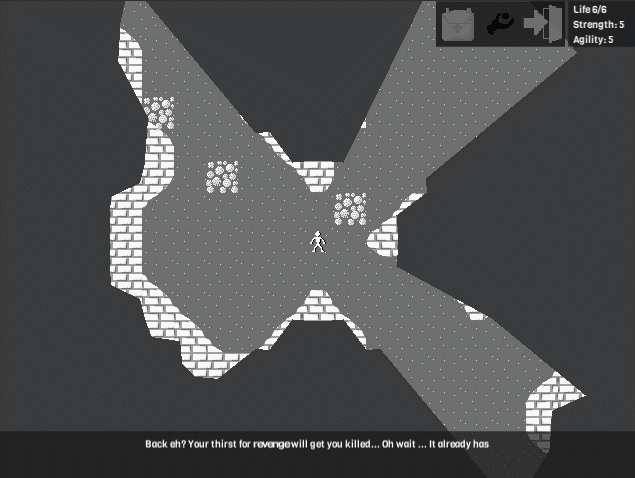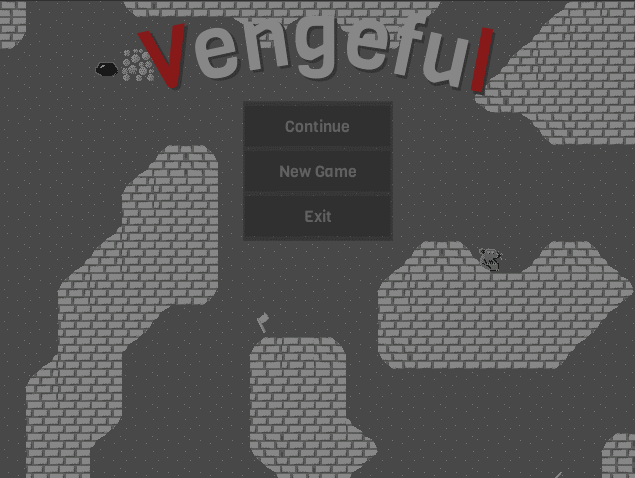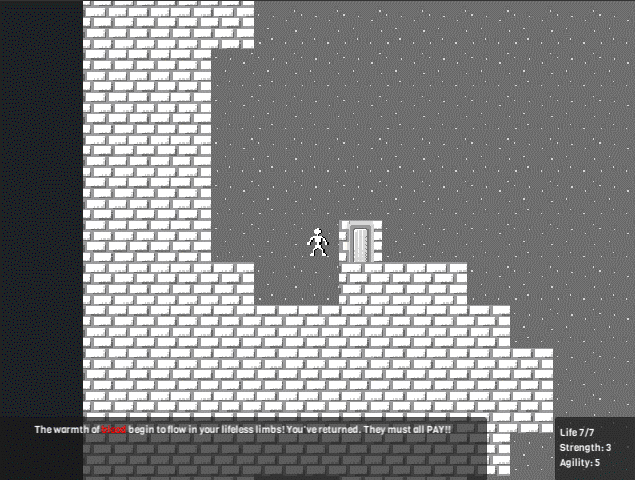Category: Development
-

Vengeful Part 2
It has been three weeks since the last blog post, and much has changed in Vengeful since that time. I’ll run down a few of those changes/improvements. I’ve added a field of view to limit the visibility of the area to that which the player can see. This changes the gameplay significantly as the player…
-

Vengeful Part 1
This past couple weeks I’ve worked on fleshing out my failed 7-day roguelike game: Vengeful. Its been gratifying to see how much I’ve been able to get done, but there is also much to be finished. For some reason though I feel like I’m making more progress than I seem to with some of the other…
-

The 7-Day Roguelike (2017 Edition)
I’ve entered … hold on … let me check … 23 Ludum Dares and completed 23 compo entries. I feel good about that, so when this year’s 7-day Roguelike compo began, I went for it. I had worked on something for the 2015 7DRL, but due to a death in the family, I was unable to finish.…